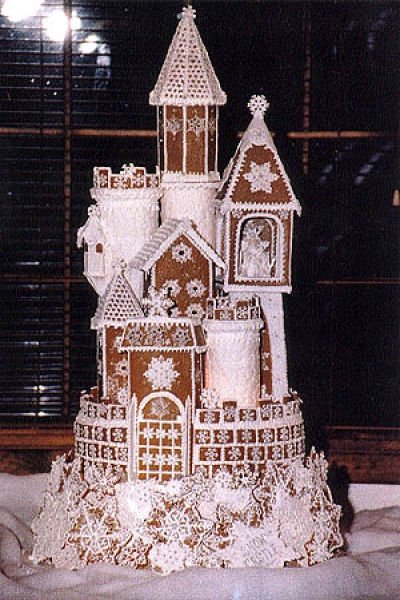|
|
Gingerbread House With Candy Decorations
|
In Germany gingerbread is made in two forms: a soft form called Lebkuchen and a harder form, particularly associated with carnivals and street markets such as the Christmas markets that occur in many German towns. The hard gingerbread is made in decorative shapes, which are then further decorated with sweets and icing. The tradition of cutting gingerbread into shapes takes many other forms, and exists in many countries, a well known example being the gingerbread man. Traditionally, these were dunked in port wine.
In Scandinavia, the most popular form of ginger confection are the Pepperkaker (Norwegian), Pepparkakor (Swedish) or Pebernødder (Danish). They are thin, very brittle biscuits that are particularly associated with the extended Christmas period. In Norway, Sweden and Denmark pepperkaker/pepparkakor/pebernødder is also used as window decorations, the pepperkaker/pepparkakor/pebernødder is then a little thicker than usual and decorated with glaze and candy. Many families bake pepperkaker/pepparkakor/pebernødder as a tradition with their kids. In English pepperkaker/pepparkakor/pebernødder would be referred to as ginger biscuits rather than gingerbread.
Gingerbreads are known in Russia. The most famous gingerbreads there are baked in the ancient cities Tula (Tula gingerbread), Vyazma, and Gorodets.
In Poland, the gingerbreads are knows as Pierniki. The most famous one is known as Toruń gingerbread (Toruński Piernik). Toruński Piernik is a traditional Polish gingerbread that has been produced since the Middle Ages in the city of Toruń (Thorn).
|
|









